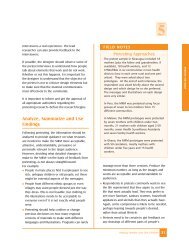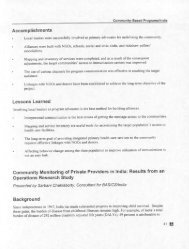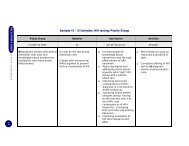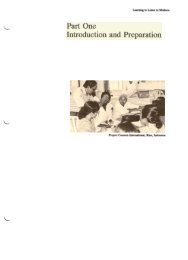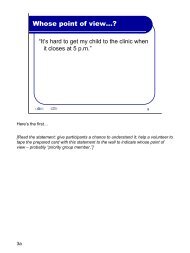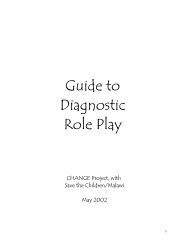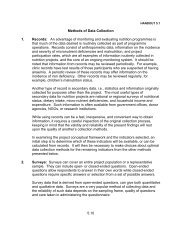MODULE TWO: COUNSELLING - FHI 360 Center for Global Health ...
MODULE TWO: COUNSELLING - FHI 360 Center for Global Health ...
MODULE TWO: COUNSELLING - FHI 360 Center for Global Health ...
Create successful ePaper yourself
Turn your PDF publications into a flip-book with our unique Google optimized e-Paper software.
•Talk to others<br />
Share your feelings of stress with someone you can trust. Talking about stress<br />
can make you feel better, and it may help you to look at your situation<br />
differently.<br />
•Write in a journal<br />
Writing your feelings down on paper is an excellent way to release stress. This<br />
can also help you to develop a plan <strong>for</strong> improving your situation.<br />
•Breathing<br />
Breathing deeply and slowly helps your body to relax. Expand your abdomen<br />
while inhaling, count to four, and then exhale.<br />
Long-term solutions<br />
These suggestions are helpful <strong>for</strong> dealing with stress in the short term. To deal<br />
with stress in the long term, you must choose one of the following three options:<br />
•Change the situation<br />
•Change how you react to the situation; or<br />
•Change how you look at the situation.<br />
Relaxation Exercise<br />
This exercise will help participants to relax their muscles and release immediate<br />
stress. Be<strong>for</strong>e conducting the exercise, make sure that the room is quiet and<br />
that there are no distractions.<br />
The following exercise is an example of "Progressive Relaxation." Progressive<br />
relaxation involves first tensing your muscles and then letting the tension go.<br />
You might wonder why we first tense the muscles. Imagine a pendulum. In order<br />
<strong>for</strong> you to get the pendulum to swing furthest to one side, you have to pull it far<br />
along the other. Similarly, to relax your muscles, it can help to tense them first.<br />
As well, you become more aware of what each muscle feels like, where it is<br />
located in your body and what to look <strong>for</strong> in the future when you are trying to<br />
determine whether muscles are relaxed or tense.<br />
1. Find a com<strong>for</strong>table position in a chair with good back support. You may also<br />
do this lying down.<br />
2. Loosen any restrictive clothing or jewellery that you are wearing.<br />
3. Close your eyes. Begin to focus on the feelings inside your body - mentally<br />
scan your entire body, from head to toe, and note any signs of tension that there<br />
may be.<br />
Session 10 – Pg. 4



